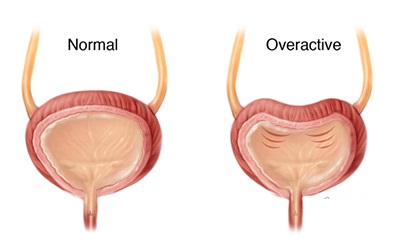Over active Bladder
—Specialisation

Causes
The causes that result the overactive bladder are unknown yet. However, certain general conditions of the body, like constipation, caffeine and obesity can increase the risk. When the diabetes, chronic pelvic pain or poor mobility are added, the problem become worse.
Symptoms
After the overactive bladder problem gets started, the symptoms that are experienced by the patient, are the following.
Diagnosis
Diagnosis is done to understand the specific cause by simple and brief evaluation. It is important to understand the signs and symptoms clearly to confirm the problem.
Diagnosis is basically done to exclude the possible conditions like neurological conditions or urinary tract infections. It is because these symptoms are similar to the symptoms of bladder cancer, urinary tract infection, benign prostatic hyperplasia, etc.
Treatments Available
The home based practices needed are the following.
Bladder training
Pelvic floor exercises
When the treatments like behavioural therapies do not help to relieve from the symptoms, medication has to be started. Injection of certain specific toxins is also given as a part of the treatment. This kind of medication is treated as second line treatment. There are a few people get relief from the medication, however they are effective moderately.
Treatment for overactive bladder also includes certain procedures. There are many of the devices used to treat this condition. Devices like urgent PC neuromodulation system can be used.
Injections, like Botulinum Toxin A done in the bladder can possibly suppress the contractions in the bladder involuntarily, through blockage of the signals of nerves. However, these resultive effects do work for nine months.
For the overactive bladder condition, complex treatments like surgery or urinary catheters are not recommended.
